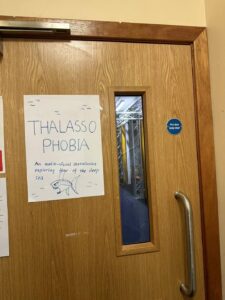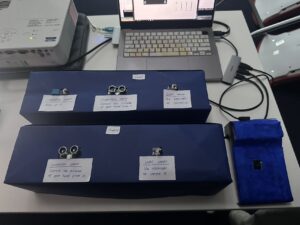This week, before our final presentation on Wednesday, our project had to make a significant decision. We decided that having a non-linear loop structure would be most advantageous for our installation. This decision is made because the pace of audience interaction with the level button cannot be predicted. We don’t want audiences to rush through all the levels. Such a result would not align with our project idea and goals.
Choosing a non-linear looping structure reduced the user’s risk of moving quickly through each level and prevented the viewer from prematurely ending the immersive experience. Therefore, our project did not end at the last peaceful level, followed by a cycle of four levels starting with the viewer’s interaction with the main controller buttons. This change ensures that audience engagement remains dynamic and allows for a more immersive and controlled experience.
In addition, we received valuable feedback from the audience during the final presentation. Based on the feedback, we took action quickly to enhance our project’s clarity. One insightful suggestion was emphasising the theme, ensuring audiences catch the project’s idea. We promptly designed and displayed a poster at the entry point to address this. This placement ensures that every visitor to the room is immediately introduced to our project’s theme, fostering better understanding and engagement right from the start.
Another valuable feedback suggested relocating the instructions for interacting with the sensors to the top of the box rather than placing them aside. This adjustment significantly enhanced the audience’s experience, making the instructions more readily accessible and easily read while engaging with the sensors. By implementing this improvement, we ensured that participants could quickly understand how to interact with the sensors, facilitating a smoother and more engaging experience for everyone involved.


Additionally, we received suggestions for further enhancement during submission 2. One suggestion addressed the narrow frequency range, particularly the underutilization of the high frequency across some levels. This feedback prompted us to make adjustments to ensure a better listening experience. By implementing sounds in different frequency ranges across the levels, the project will be optimized, having a richer and more dynamic auditory experience for our audience.
Below are some short videos that we recorded during the presentation.
Interaction:
Location setup:

